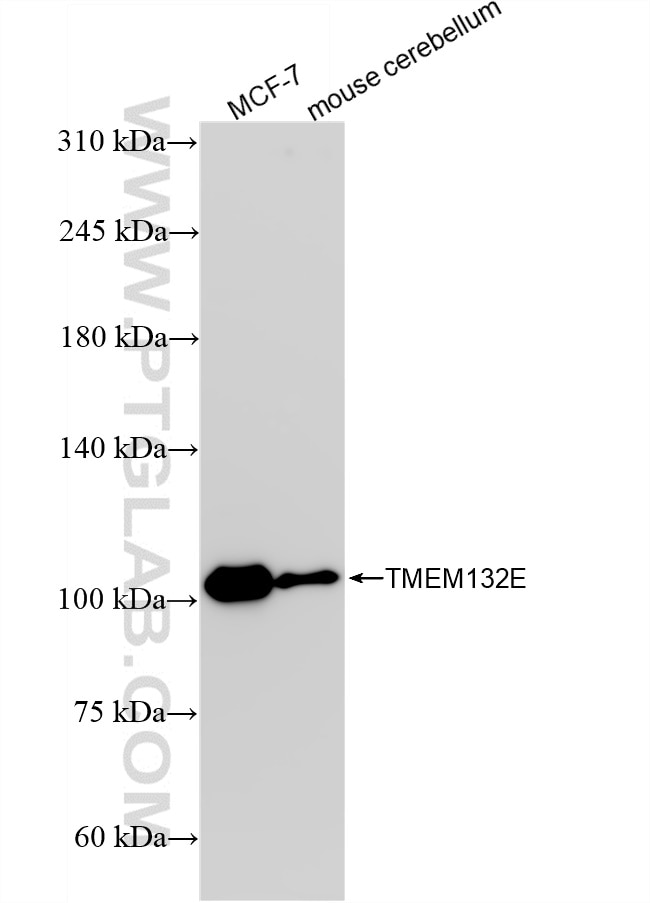TMEM132E Rekombinanter Antikörper
TMEM132E Rekombinant Antikörper für WB, ELISA
Wirt / Isotyp
Kaninchen / IgG
Getestete Reaktivität
human, Maus
Anwendung
WB, ELISA
Konjugation
Unkonjugiert
CloneNo.
230525E12
Kat-Nr. : 82983-2-RR
Synonyme
Geprüfte Anwendungen
| Erfolgreiche Detektion in WB | MCF-7-Zellen, Maus-Cerebellum-Gewebe |
Empfohlene Verdünnung
| Anwendung | Verdünnung |
|---|---|
| Western Blot (WB) | WB : 1:1000-1:4000 |
| It is recommended that this reagent should be titrated in each testing system to obtain optimal results. | |
| Sample-dependent, check data in validation data gallery | |
Produktinformation
82983-2-RR bindet in WB, ELISA TMEM132E und zeigt Reaktivität mit human, Maus
| Getestete Reaktivität | human, Maus |
| Wirt / Isotyp | Kaninchen / IgG |
| Klonalität | Rekombinant |
| Typ | Antikörper |
| Immunogen | TMEM132E fusion protein Ag26772 |
| Vollständiger Name | transmembrane protein 132E |
| Berechnetes Molekulargewicht | 116 kDa |
| Beobachtetes Molekulargewicht | 100-110 kDa |
| GenBank-Zugangsnummer | NM_001304438 |
| Gene symbol | TMEM132E |
| Gene ID (NCBI) | 124842 |
| Konjugation | Unkonjugiert |
| Form | Liquid |
| Reinigungsmethode | Protein-A-Reinigung |
| Lagerungspuffer | PBS with 0.02% sodium azide and 50% glycerol |
| Lagerungsbedingungen | Bei -20°C lagern. Nach dem Versand ein Jahr lang stabil Aliquotieren ist bei -20oC Lagerung nicht notwendig. 20ul Größen enthalten 0,1% BSA. |
Hintergrundinformationen
Transmembrane protein 132E (TMEM132E) is a member of the TMEM132 family which also include TMEM132A, TMEM132B, TMEM132C, TMEM132D (PMID: 29088312). The gene of TMEM132E is located within the DFNB99 locus on chromosome 17q12 and is highly expressed in the inner ear and other tissues including brain, kidney, lung, liver, spleen, heart, small intestine, colon, thymus, and stomach (PMID: 31656313). A variant of TMEM132E has been associated with autosomal-recessive nonsyndromic hearing loss DFNB99 (PMID: 25331638).
Protokolle
| PRODUKTSPEZIFISCHE PROTOKOLLE | |
|---|---|
| WB protocol for TMEM132E antibody 82983-2-RR | Protokoll herunterladen |
| STANDARD-PROTOKOLLE | |
|---|---|
| Klicken Sie hier, um unsere Standardprotokolle anzuzeigen |




